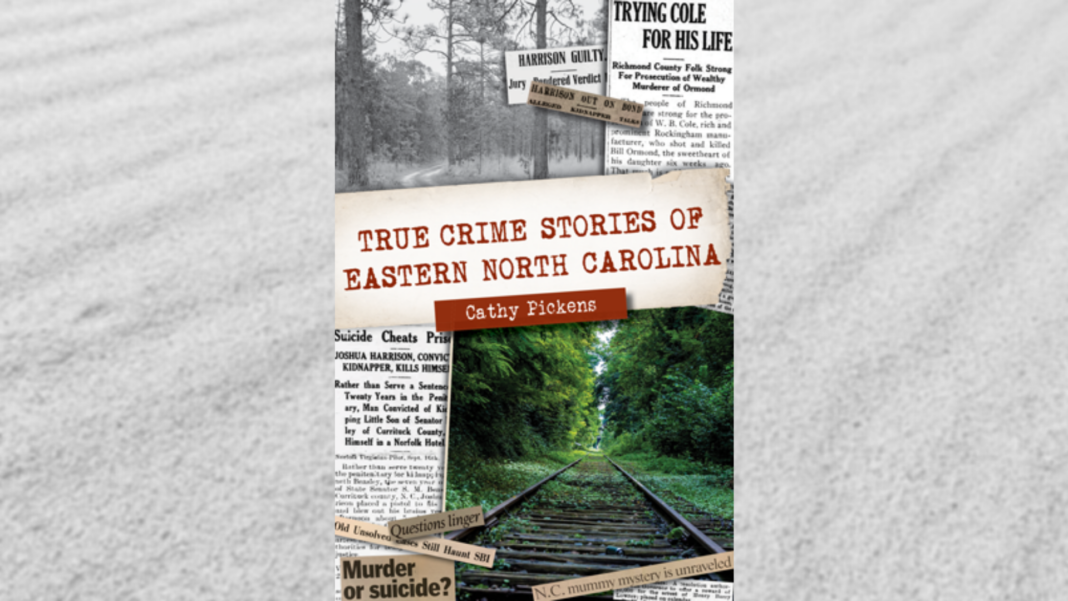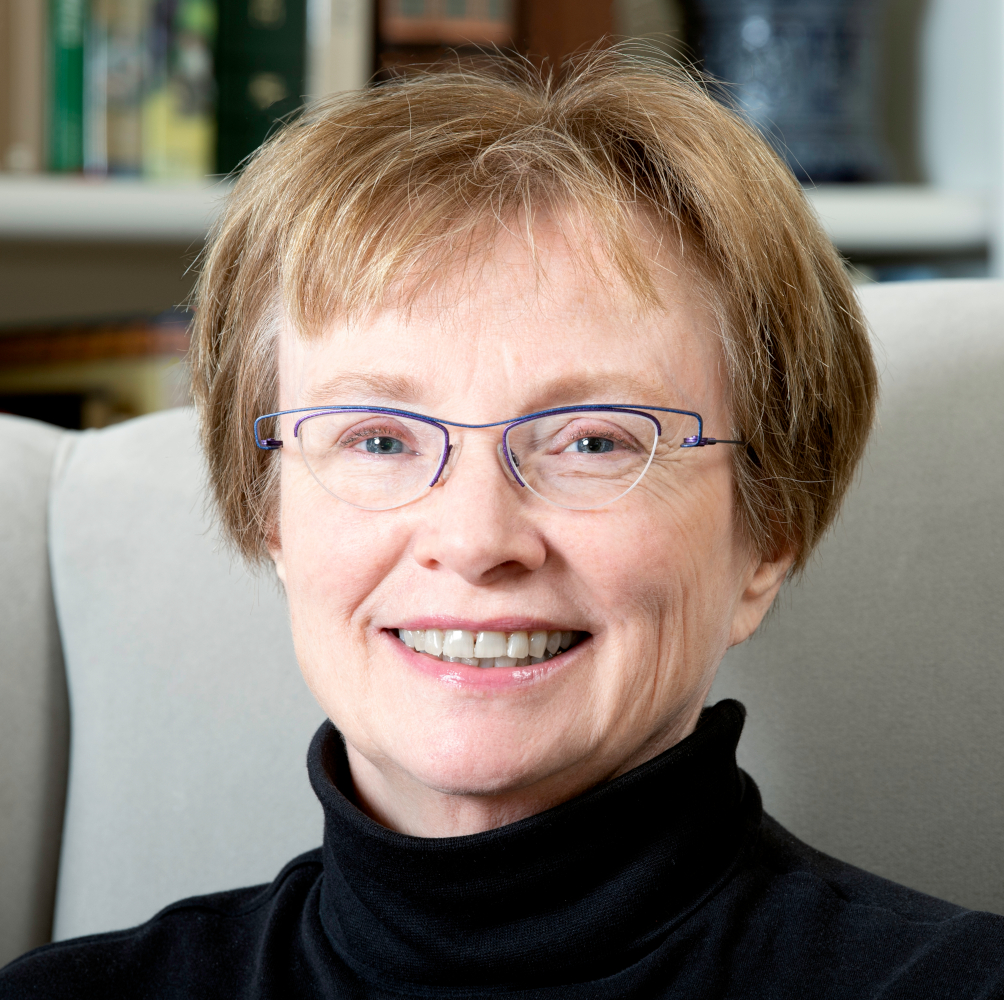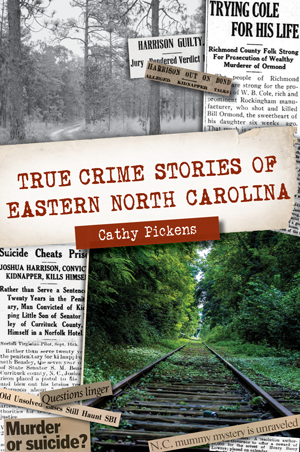
Continuing our occasional series of author interviews, this month we’re delighted to welcome Cathy Pickens to Crime Capsule. A true Renaissance lady—among other hats, Pickens is a law professor, historian, teacher, and mystery novelist—she is also the author of the brand new volume True Crime Stories of Eastern North Carolina, published last year by Arcadia Publishing/The History Press. You can read more about her work at her website, http://www.cathypickens.com.
Crime Capsule: Congratulations on your new book! Can you tell us how True Crime Stories of Eastern North Carolina came to be?
Cathy Pickens: The short answer is I went to jail. In research for writing mystery fiction, I became fascinated with real crime stories—first, looking for details, methods, plot devices, how a poison works, how an interrogation unfolds. Then one day, no matter how I’d tried to say no, I ended up teaching workshops—first, on how to start a business, and later, on creative writing—in the massive Mecklenburg County Jail.
In jail, those news articles became living, breathing human beings who, frankly, weren’t so different from the folks who’d been students in my MBA classes—funny, creative, hungry to improve themselves. Instead of a mental puzzle to play with, crime began to have a human dimension. After I wrote about Charlotte and how crime defines that city, Eastern North Carolina was the logical next stop in capturing North Carolina’s unique crime stories.
You’ve written for Arcadia/The History Press before, publishing Charlotte True Crime Stories and Charleston Mysteries: Ghostly Haunts in the Holy City. What did you learn working on your previous books that you could apply to this one?
Charleston Mysteries started as a lark—a walking tour pamphlet I wrote when I set one of my murder mysteries in Charleston. I even had goofy blurbs on the back cover, like “This one is written by my sister-in-law—and she’s pretty scary.” The History Press invited me to expand that into a book, which includes crime as well as ghosts.
Nothing beats visiting the “scene of the crime.” For Charleston Mysteries,my nephew, his college roommate, and I dodged rain bands from a tropical storm to take photos. For the new book, my husband and I spent a couple of weeks in a record heat wave touring eastern North Carolina. Scrolling through the photos, he laughed. “Not your usual vacation photos, are they?” I’m passionate about not just getting the facts but getting to the story. For me, these true cases require the same techniques, the same eye for what makes a good story. The nicest thing is when someone says they read like good fiction.
You tell a variety of tales in True Crime Stories of Eastern North Carolina—from deadly “black widow” homemakers to local swamp outlaws to murderous sex-driven swingers. With so many incredible criminals to choose from, how did you pick your subjects?
Oh my, how to choose? Every locale has cases that everyone knows. I was hesitant at first to write about the most famous—but even though people know the headlines, they don’t always know the details.
What of the stories we simply shouldn’t forget? I don’t like to read about depravity and evil. I am, though, fascinated by people who feel compelled by difficult circumstances to cross a line, like the swamp outlaws that befuddled law enforcement in Robeson County in the 1860s. Or missing persons, like the state senator’s son who disappeared in Currituck County. Or the cases we haven’t been able to solve.
Nor can I resist writing about poisoners. From what I’ve found, North Carolina has more convicted female serial poisoners than any other state, and Eastern North Carolina had some doozies. Do you reckon we’re just better at catching them here, or …?

What kind of material did you use to tell your story? What were your main sources?
My dark secret is I have shelves crowded with books and file cabinets stuffed with newspaper clippings about crimes, all collected over decades. No detox program for that, I fear. To those resources, I’ve added the expertise of amazing librarians, along with websites, online research, blogs, podcasts, and Facebook sites. My research process is much more sophisticated now, thanks to crazy changes in research technology, so my insatiable love of digging now has more rabbit holes than it did twenty years ago—which just makes it more fun.
You’ve written about the Carolinas in your previous books. Has any aspect of the true crime stories you’ve written about hit home for you? Do you have any personal connections to what you’ve researched?
I met my first murderer when I was three. I haven’t written about him, but once you start pulling the strings, it’s amazing the connections that come unearthed. At book events, I’ve met people who grew up down the road from the Outlaws motorcycle clubhouse, or who left the gym when alone there with a man suspected of killing his wife, or who dated a woman who went missing.
In the Charlotte book, I wrote about a woman killed in her home. I now live a mile down the road. In the book I’m working on now, I found out my father went to high school with a girl who married a man suspected of being a Cold War spy. Crime is closer than we think.
Alongside your work as a historian you’ve had a longtime career in the legal world, both in the private sector and in academia. Your meticulous, fact-hungry approach to storytelling certainly informs your writing—but how else has your immersion in the law equipped you to tell these stories?
Fact-hungry. That’s a good description. Or maybe it’s “story hungry.” The one thing that unifies the pieces of my life—lawyer, professor, creativity coach, writer—is story. I’m one of many writers who went to law school. In some ways, I have to overcome being a lawyer in order to be a better writer. Lawyers love footnotes. Ten footnotes for a single sentence? About right, we’d say.
But it helps to have some sense of the history of forensics in courtrooms, of the limitations of expert witnesses—as in one Eastern North Carolina case with a shoe expert whose unsupported testimony helped convict several men around the country—or of how the appeals process unfolds. A comfort with appellate court opinions and scientific details also helps. But my affection for those has to be tamped down to make sure the story is readable. Readers don’t want a legal or scientific treatise. Readers want to meet real people who make them think and feel, who leave them understanding a bit more about others. Readers want a behind-the-scenes peek at an often-closed world.
Last but not least, can you tell us about your next project? What are you working on now?
I want to cover the rest of the Carolinas’ crime stories, and the next logical stop is the Triangle area of Raleigh/Durham/Chapel Hill. That book, Triangle True Crime Stories, will be coming out in May. A bombing inside an office building? The largest prison break in American history, yet no one was injured? Another female poisoner? A lover’s lane murder? Dedicated cops pushing to solve decades-old murders? Who could resist?

Eastern North Carolina is a land of contrasts, and its crime stories bear this out. A lovelorn war hero or a stalker? Conniving wife or consummate homemaker? Murder or suicide? The answers can be as puzzling as the questions. Mystery author Cathy Pickens details an assortment of quirky cases, including a duo of poisoning cases more than one hundred years apart, a band of folk hero swamp outlaws, sex swingers and a couple of mummies. Each story has, in its way, helped define Eastern North Carolina and its history.



